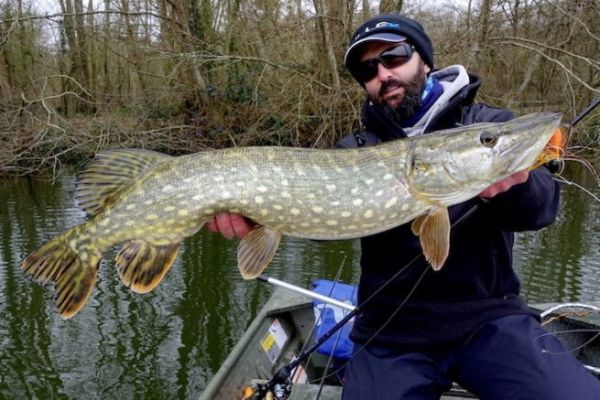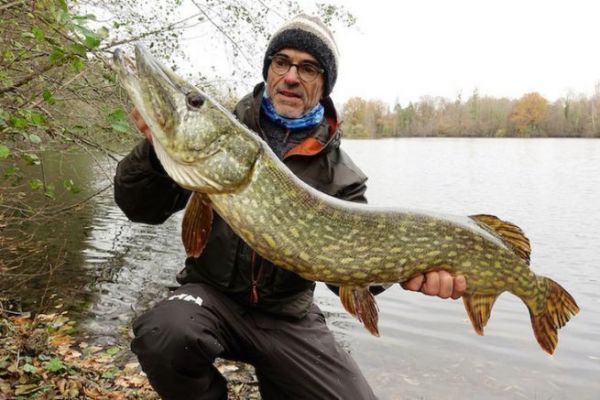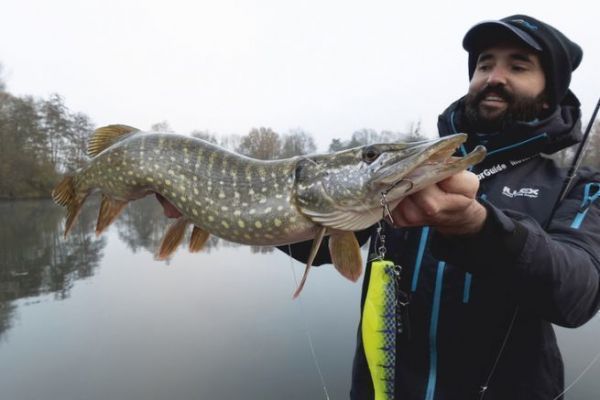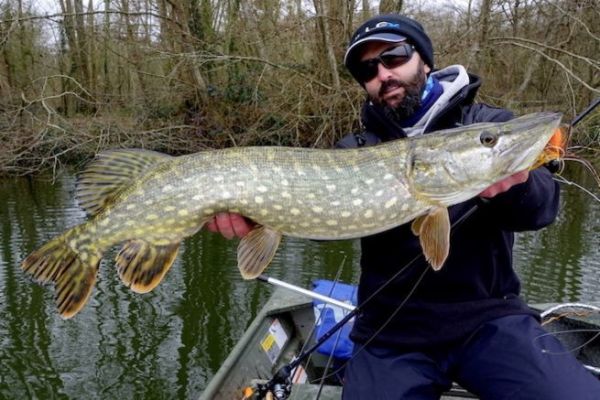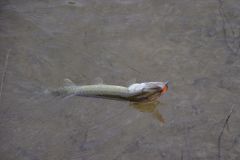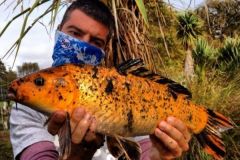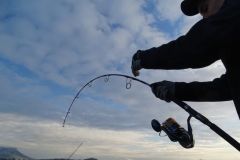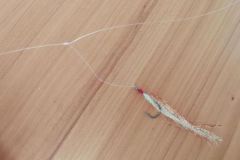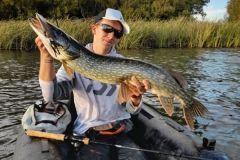When slow retrieves are not productive, I often resort to "stop fishing". By "stop fishing" I am referring to a long or even very long pause during the lure's retrieve which could be similar to "Do Nothing" or "Dead Sticking" (expressions from black bass fishing), a factor which could trigger hits.
There are quite few large suspending lures. They are often slow sinking or slow floating and therefore, few are those that remain perfectly still during breaks. That's why I'm going to use two types of lures: jerkbait minnows and rubber jigs.
Jerkbait minnows and longbill minnows suspending
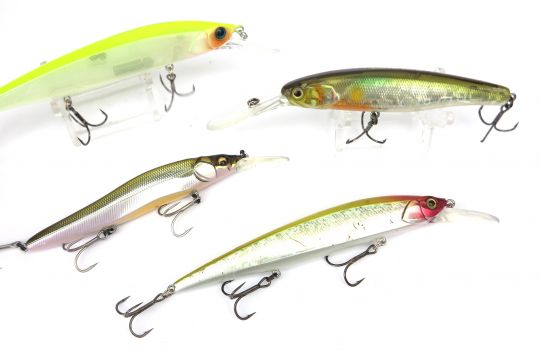
This suspending character refers to their property of having a density equal to that of water conferring them the possibility of remaining perfectly immobile in the water column during the pauses phases during the recovery.
In winter, I often use a sub-category of jerkbait minnows when I fish in more than 3 meters of water: the longbill minnows suspending. The longbills are jerkbait minnows with a large lip allowing to fish deeper and in winter they are indestructible! It is a pity that longbills are so little represented on the French market‚euros¶
Animation pattern
The keystone of the animation, you understood it, will be the pause. The most productive animation for pike in winter corresponds to an alternation of aggressive and calm phases (in the same way as the Loud-Quiet-Loud of Grunge!) and responds to the following pattern: a succession of jerks more or less marked for the aggression - intensity to be defined according to the response of the fish, but I often had more results following quite violent jerks - interspersed with pauses that we will not hesitate to make last more than 10 seconds (it is long but it works!). And it is of course the majority of the time on this pause phase that the magic will operate. Also, we will make sure to vary the number of jerks between each break to avoid any monotony.

The rubber jig
The other solution that I like to use in winter is the rubber jig. When the biotope allows it, I can use it for reaction fishing in the heart of obstacles (hollow and crowded banks in particular) but very often it is the fact of being able to fish very slowly on the bottom with it that will interest me. A long pause on the bottom of a rubber jig whose skirt unfolds progressively has shown me many times its effectiveness.
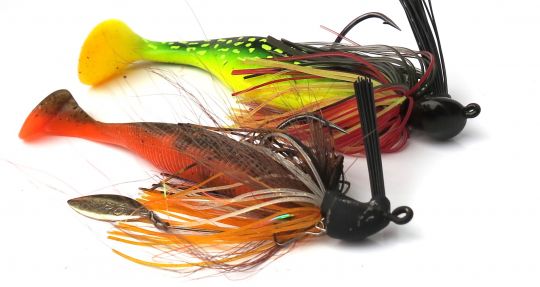
The rubber jig for marked spots
Unlike the jerkbait minnow which, because it will be noticed by the fish on the aggressive phases of jerks, can be used as a prospecting lure in open water, the discretion of the rubber jig associated with the slowness of the animation will imply to select a marked position.
Animation in 2 phases
As I said above, there are two main phases of rubber jig fishing: 1) the "reaction" phase characterized by the descent of the lure into the heart of the obstacles during which a fish may bite by reflex. In this phase, the heavier the jig, the faster it will sink and the more we will reinforce this "reaction" search. 2) The recovery phase after contact with the bottom. It is this phase that I will slow down considerably in winter.
Animation pattern
After having sent the rubber jig to the desired location, you should keep your banner half stretched out when the lure goes down to the bottom because even in winter, pikes don't hesitate to crunch by reaction a rig passing right in front of their nose. The hits are particularly violent during this phase and the rig is often shut down.
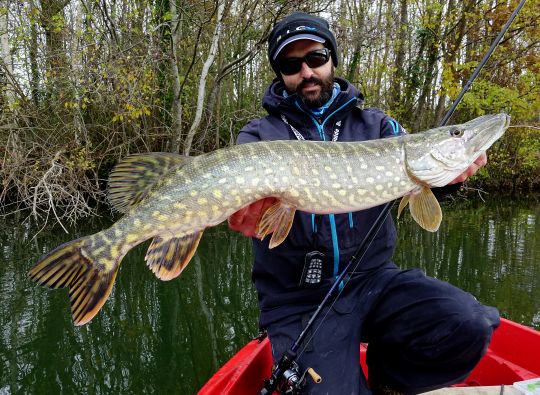
Concerning the other phase of animation, it starts as soon as the rig is in contact with the bottom. The principle will be, as one would do for the zander, to take off the assembly of the bottom by printing a movement of the rod of weak amplitude upwards then by lowering again the rod while recovering the surplus of banner, to then let it take again contact with the bottom.
If you are fishing on a drop-off, rod movements are not necessarily necessary. A simple retrieve with the reel will lift the lure off the bottom and let it sink a few inches lower. The principle is never to move too far from the bottom because it is precisely on the bottom that the inactive fish are found.
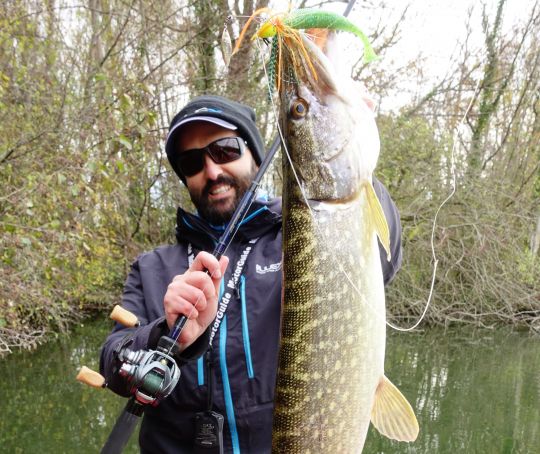
All these explanations don't really fit with the title of this article, but that's because I haven't yet addressed the crucial point of this second phase, which, as with the animation of a jerkbait minnow, will be the break.
In fact, each time the lure comes back into contact with the bottom, it is necessary to let the rubber jig skirt unfold completely and even leave the lure inert on the bottom for a long time (10 seconds is not too much). Contrary to the violence of the bites on the descent, on this phase the bites are often discrete and manifest themselves by a light - poc - in the line.
To convince you to try this very slow fishing, I will tell you that my ratio of violent strikes to discreet strikes is 70% in favor of the latter.
Council
Finally, my advice is to apply this technique on a sector that you know or at least, a sector that your fishing instinct tells you is particularly promising. The rubber jig is a lure designed to pick up spots with a series of short pitching and skipping casts. In winter, more than in any other season, you will have to multiply your casts until your rig actually passes under the nose of a fish!
In summary
These two techniques, which are similar to ‚??Do nothing‚? on a crucial phase of decoy retrieval, are particularly productive when conditions demand it but are themselves particularly demanding with the nerves. Managing to fish very, very slowly, to hold pauses of more than 10 seconds is not necessarily within the reach of all‚euros¶ but the game is worth the candle!

 /
/ 